Shea butter and oatmeal soap simply make the skin look and feel great. No matter what scent you decide to use (if any) your skin will smell fresh and amazingly soft to the touch after using this simple melt and pour soap recipe.
I used goat’s milk melt and pour soap base to create shea butter and oatmeal soap in several different colors and scents, but you can pick any melt and pour soap base you would like or happen to have without altering any of the ingredients or measurements.
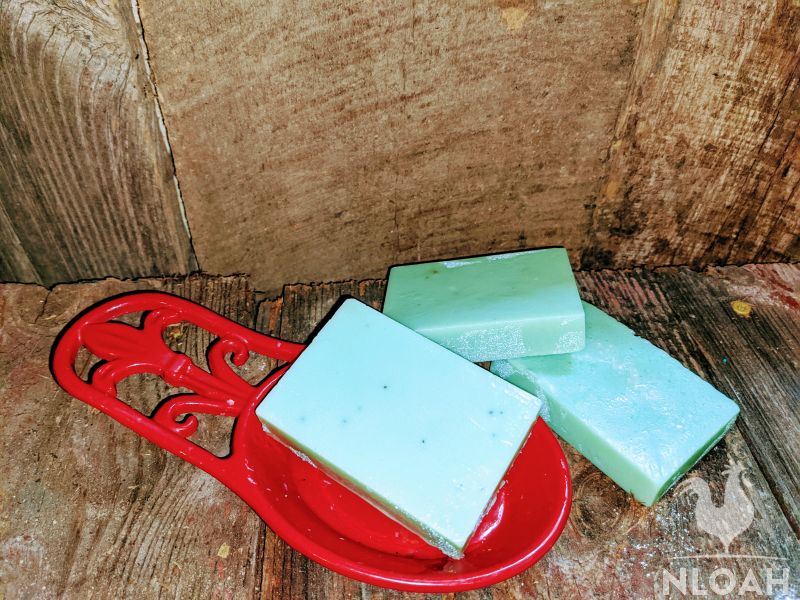
I love the way goat’s milk soap softens the skin, so I use it most often unless I want a clear glycerin soap that is going to have flowers suspended inside for added visual effect.
The entire soap making process takes only roughly 10 minutes and does not require being exposed to lye.
Melt and pour soap bases take all of the guesswork and lye concerns out of the soap making process, but still allow you to personalize the scent, texture, color, and added skin care ingredients to each bar.
Why Shea Butter Is Good To Use In Soap
- The rich concentration of essential vitamins and fatty acids found in shea butter is why it’s often used in soap, cosmetics, lotions, and creams of all types.
- Shea butter may help soothe dry skin and reduce inflammation from minor and common skin rashes.
- The anti-inflammatory compounds in shea butter can help heal chapped skin and soothe minor wounds.
- Shea butter has also been used alone or as an active natural ingredient to soothe insect bites, sore muscles, psoriasis, dandruff, acne, stretch marks, fine lines and wrinkles, as well as arthritis.
Why Oatmeal Is Good To Use In Soap
- Oatmeal helps to reduce oil content in the skin without drying it.
- This breakfast staple may also help prevent and treat acne-prone skins.
- The natural antioxidant and anti-inflammatory compounds in oatmeal make it an excellent natural exfoliant that helps to remove dead skin cells and leave skin softer and more supple.
- The saponins in oatmeal are a wonderful natural cleansing agent that help remove oil and dirt from deep inside of the pores.
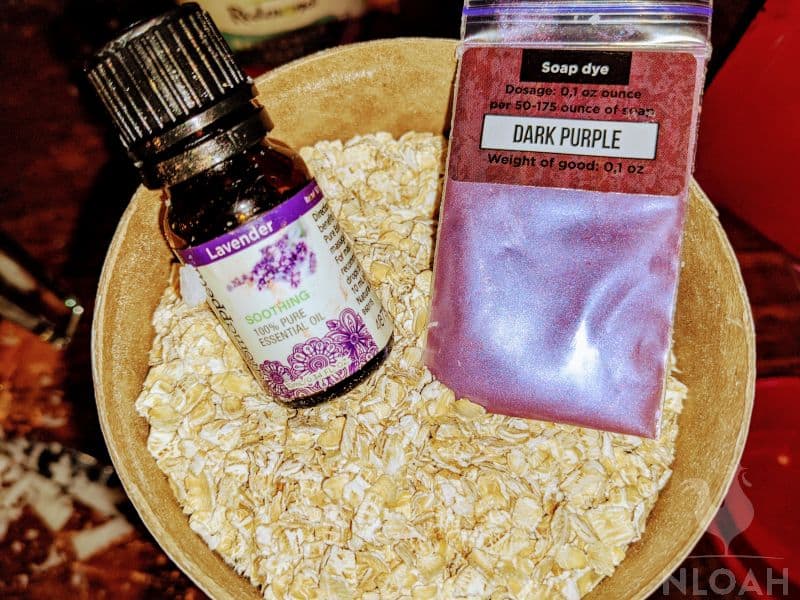
Ingredients and Supplies
- 3 teaspoons of oatmeal – I recommend against using instant oatmeal
- 1 teaspoon of mica powder – optional but recommended if you want a colored soap. I chose green and purple mica powder when making two batches of this soap simply because they were a gift for my mother and those are her favorite colors.
- 10 – 15 drops of your favorite essential oil – optional but recommended for enhanced scent – I made one batch of this soap with eucalyptus and another with lavender, both go great with the natural light scent of oatmeal.
- 2 pounds of goat’s milk or shea butter melt and pour soap base – this amount of base can make about 10 standard-size bars of soap.
- 3 tablespoons of raw shea butter – not needed if you are using a shea butter melt and pour soap base
If using raw shea butter it too will need to be cut into chunks and melted in the microwave or a double boiler.
Timing is crucial when using raw shea butter because it must be heated into a liquid state and poured into the melt-and-pour base when it is also in a liquid state.
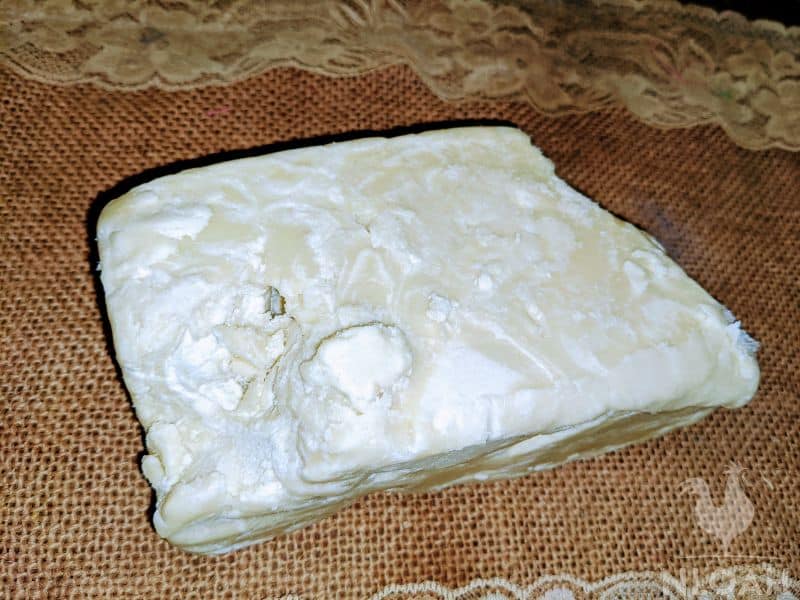
I put the raw shea butter in the microwave with the melt-and-pour base – after cutting it into smaller chunks so they both become completely melted at the same time.
Surprisingly, shea butter melts more slowly than the melt-and-pour base even though it is softer to the touch.
Shea Butter and Oatmeal Melt and Pour Soap Recipe
Equipment
- Glass measuring cup with a pour spout
- Sharp knife
- soap molds
- toothpicks
- Measuring spoons
- Rubbing alcohol – this is optional but coating molds with the rubbing alcohol can create a more smooth finish and also reduce the amount of air bubbles.
Ingredients
- 3 teaspoons oatmeal
- 1 teaspoon mica powder
- 10 – 15 drops essential oils
- 2 pounds goat’s milk
- 3 tablespoons raw shea butter
Instructions
- Use the knife to chunk away four or five pieces from the melt and pour soap base.
- Stack the soap base chunks loosely into the glass measuring cup.
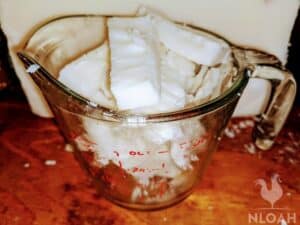
- Put the measuring cup filled with the base hunks into the microwave for 60 seconds.
- Remove the mixture in the measuring cup from the microwave, and stir rapidly to combine the soap base. Clear glycerin soap bases melt far more quickly than goat’s milk or shea butter melt and pour soap bases.
- Place the measuring cup in the microwave again for 30 seconds.
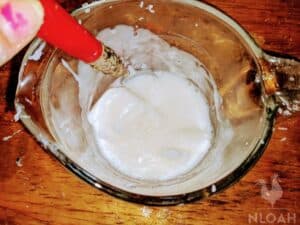
- Repeat the previous step once or twice more – stirring the melt and pour soap base each time, until all of the chunks have completely melted. Never get into a rush and heat the soap base for longer than one minute once and 30 second intervals following or risk scorching the soap base and rendering it nothing more than a big mess you cannot use.See the photo below to see what a goat’s milk or shea butter melt and pour soap base usually looks like after being microwaved for 90 seconds.
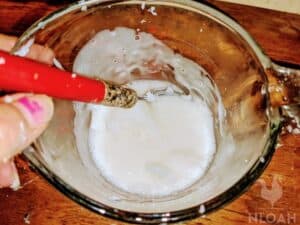
- Get your soap molds ready while heating the base. Coat them with rubbing alcohol now if you are using it to prevent air bubbles. I recommend putting silicone soap molds onto a baking sheet so they can be moved without disturbing the curing soap if you are going to refrigerator cure or need to use the work space again before the room temperature curing process is complete.
- Stir in the oatmeal.
- Add in the eucalyptus essential oil or lavender essential oil (or use any single or combination that you choose) and the mica powder and stir to completely combine.
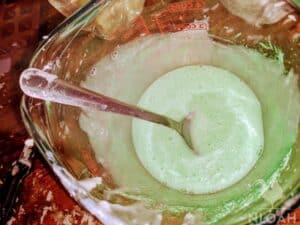
- Pour the shea butter, oatmeal, and eucalyptus melt and pour soap mixture into the molds.
- Use a toothpick to burst any air bubbles that appear on the soap’s surface lightly. Never push the toothpick any further into the still hot soap mix than necessary to avoid the toothpick from poking a hole through to the other side of the bar.
- There are two simple ways you can cure the shea butter and oatmeal soap. The molds can be placed in a level spot in the refrigerator for about 30 minutes or leave the molds in a level spot to cure at room temperature for two to three hours.
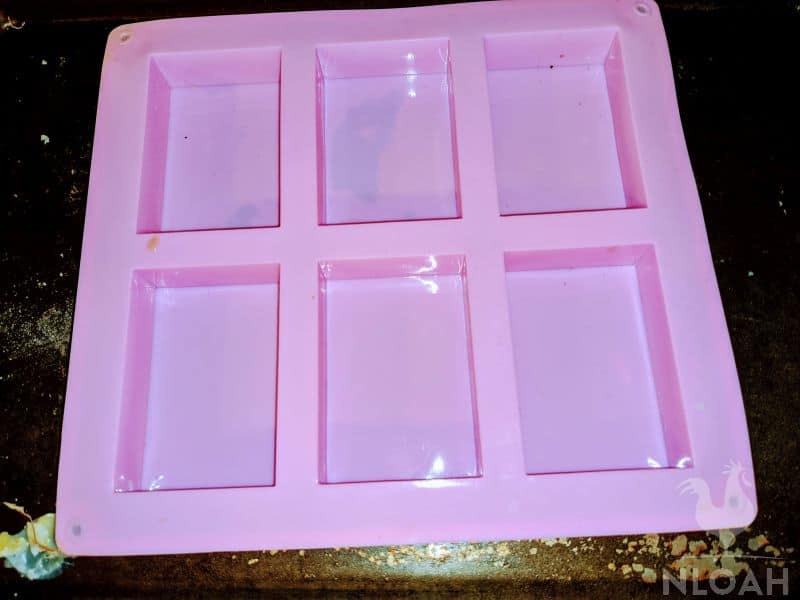
Melt and pour soap bases can typically retain both their scent and texture for 12 months. But, because a fresh material was used in creating this particular bar (the oatmeal), it should be used within three to six months.
Mold and bacteria can (often does) grow from the fresh material used in melt and pour soap recipes. If you want to use a lot of fresh material, or create a soap that will last longer when fresh ingredients are used, consider using the cold process (lye required) method, instead.
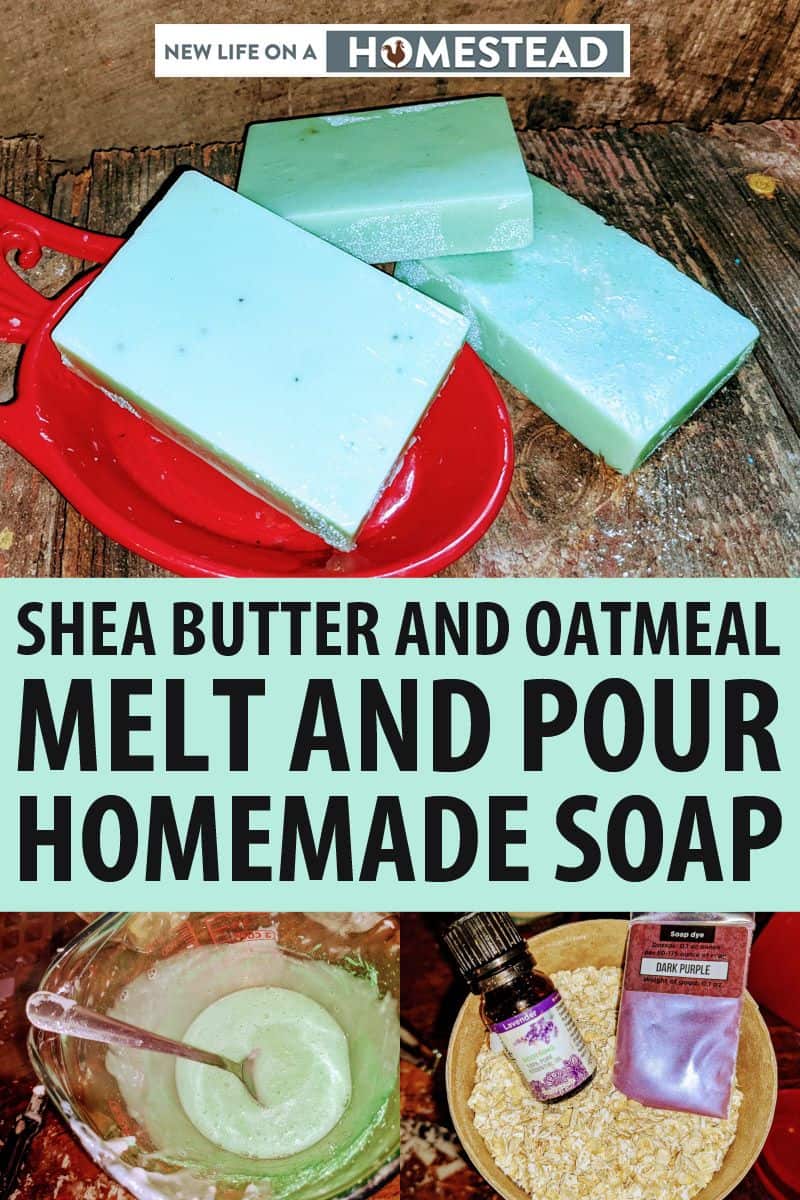

Tara lives on a 56 acres farm in the Appalachian Mountains, where she faces homesteading and farming challenges every single day, raising chickens, goats, horses, and tons of vegetables. She’s an expert in all sorts of homesteading skills such as hide tanning, doll making, tree tapping, and many more.
